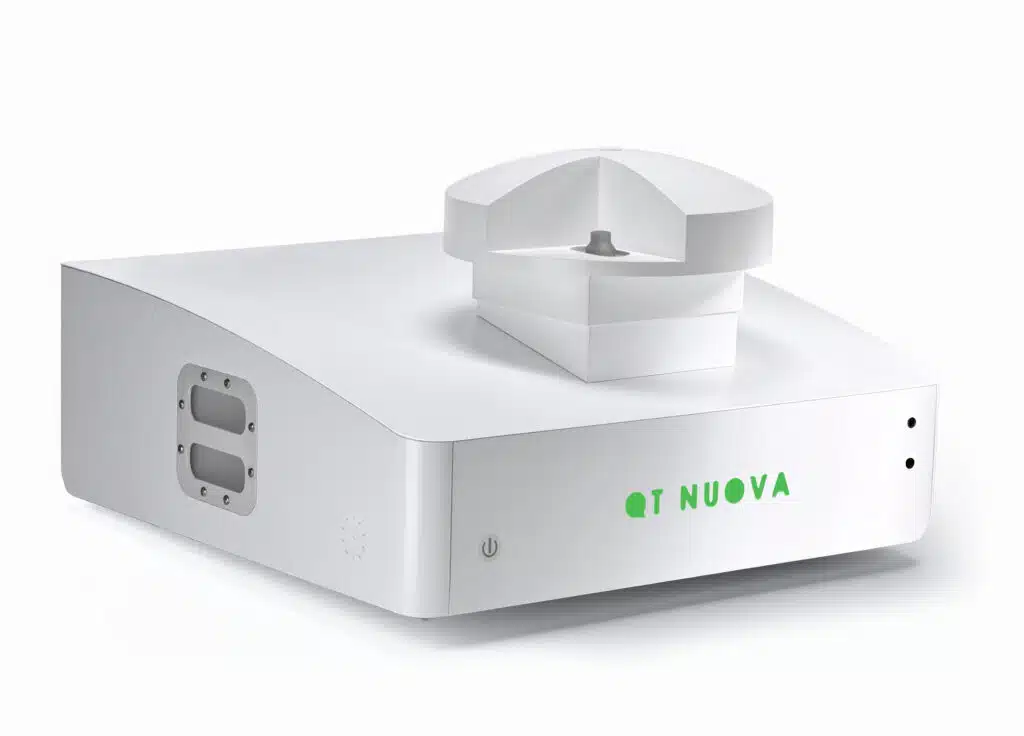Harnessing single-cell analysis, Quantum Nuova unlocks an unprecedented understanding of diseases driven by free radicals.
Unlocking Cellular Individuality
For decades, much of biological research has viewed life through a wide lens, analyzing the collective behavior of vast cell populations. While incredibly valuable, this “bulk” approach often averages out the very differences that drive biological complexity. Imagine trying to grasp the soul of a vibrant city just by looking at its overall power consumption – you’d completely miss the intricate dance of individual lives, diverse businesses, and unique neighborhood activities. Similarly, tissues and even lab cultures are bustling metropolises of cells, each with its own identity, function, and story to tell. Unlocking the secrets of health and disease fundamentally requires zooming in on these individuals.
Nowhere is this cellular individuality more critical than in cancer research. We now understand that tumors are not uniform masses but complex, evolving ecosystems. They contain diverse populations of cancer cells, each potentially harbouring unique vulnerabilities, resistance mechanisms, and metastatic potential. Trying to understand or treat the tumor based solely on the average properties of these cells is like trying to solve a complex puzzle with half the pieces missing. Truly conquering cancer demands that we understand the characteristics and behavior of individual cancer cells within their microenvironment.

The power of single-cell analysis to explore and understand cellular heterogeneity extends far beyond cancer. Why do only certain cells in a tissue respond to a drug or stimulus? How do individual stem cells make fate decisions during development? What determines how specific immune cells react to invaders? The answers are woven into the unique fabric of single-cell biology. One particularly challenging, yet vital, area of single-cell investigation involves free radicals. These highly reactive molecules, defined by their unpaired electrons, are natural byproducts of metabolism and crucial signaling messengers. However, in excess (a state known as oxidative stress), they indiscriminately damage cellular machinery. The catch? Their high reactivity makes them incredibly short-lived and difficult to track. Traditional detection methods often provide only static snapshots, failing to capture the crucial real-time dynamics of these fleeting molecules within the complex environment of a living cell.
This is where the revolutionary potential of quantum sensing enters the picture. Our pioneering approach at QT Sense harnesses the delicate principles of quantum mechanics to create quantum biosensors of unprecedented sensitivity, capable of probing the subcellular world. We utilize specially engineered Fluorescent Nanodiamonds (FNDs) containing Nitrogen-Vacancy (NV) centers. These NV centers are atomic-scale defects within the diamond lattice that act as tiny, powerful sensors. The quantum state of an NV center is exquisitely sensitive to its local magnetic environment, meaning the minuscule magnetic field generated by an unpaired electron of a free radical subtly alters the NV center’s fluorescence, which we can detect. Importantly, these FNDs are biocompatible and can be readily taken up by living cells, enabling us to place these nanoscale sensors directly inside individual cells without disruption.
Quantum Nuova: Your Window to Dynamic Cellular Redox
To deploy these quantum biosensors effectively, QT Sense integrates them into the Quantum Nuova system. This quantum-enabled biosensing platform is designed for medium-throughput analysis, allowing us to monitor individual cells cultured in standard formats like well plates, petri dishes, or on slides. Quantum Nuova enables the real-time redox monitoring and analysis of the dynamic generation and depletion of free radicals in living cells. This is the first time researchers can gain such precise, dynamic insights into free radical biomarkers at the subcellular level, truly setting a new standard for oxidative stress detection.
This unparalleled capability unlocks exciting research possibilities across life science and healthcare. Researchers can now directly investigate how different cell types within a tumor exhibit varying levels of oxidative stress, potentially revealing unique vulnerabilities or resistance pathways. We can study the dynamic interplay between free radical generation and other critical cellular processes like cell migration, hypoxia response, and drug response. Questions such as how free radical levels change as a cancer cell prepares to metastasize, or if modulating oxidative stress affects a cell’s susceptibility to a particular drug, can finally be addressed at the fundamental, single-cell level, accelerating biomarkers for drug discovery.
The ability to perform real-time, single-cell analysis of free radicals using quantum biosensors represents a profound paradigm shift in cell biology. By moving beyond population averages and fully embracing cellular individuality, QT Sense empowers researchers to gain a far deeper and more accurate understanding of biological complexity. This granular view promises to accelerate the development of more precise diagnostics and targeted therapies for cancer, aging-related conditions, neurodegenerative disorders, and beyond. The era of truly understanding biology, one cell and one quantum sensor at a time, is dawning.

Share this:





